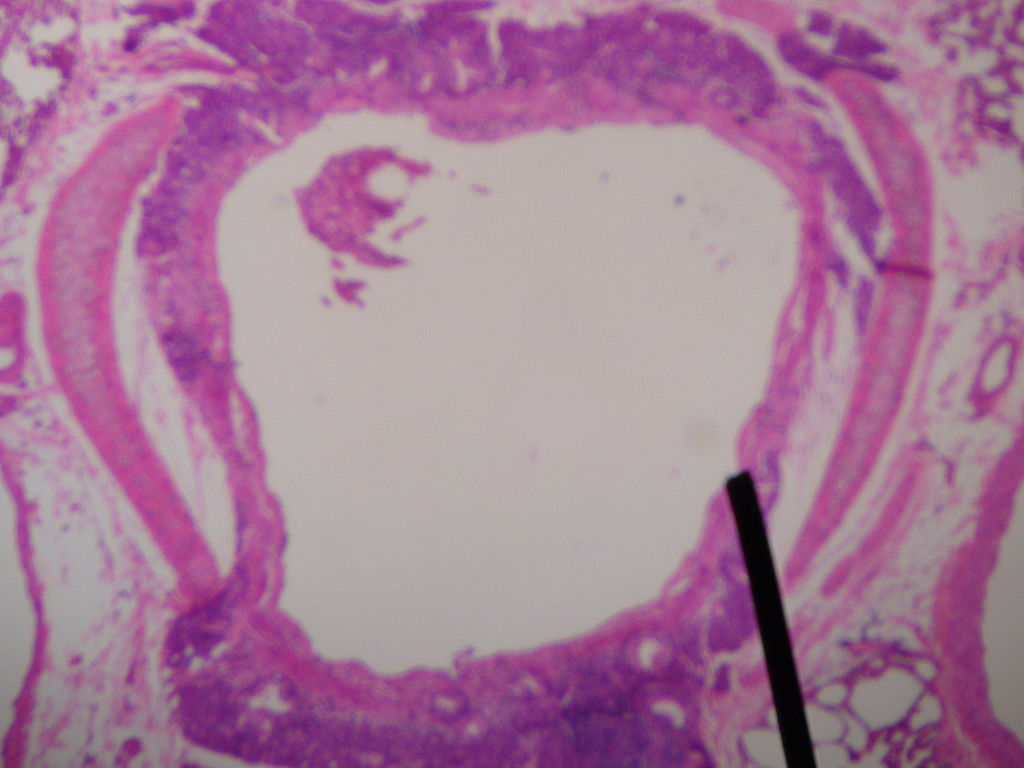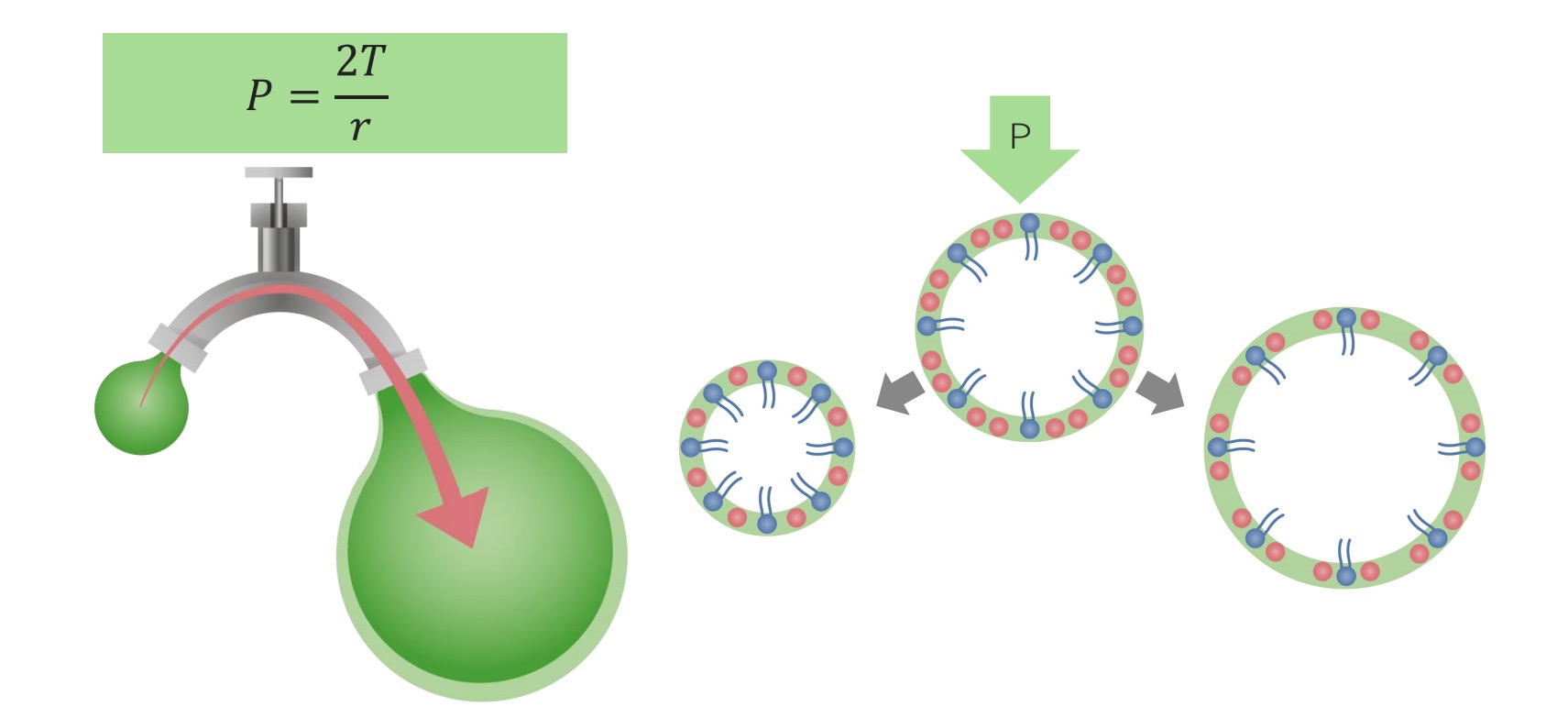Playlist
Show Playlist
Hide Playlist
Diffusion Capacity – Laboratory Diagnostics
-
Slides Diagnostics PulmonaryFunctionTest RespiratoryPathology.pdf
-
Reference List Pathology.pdf
-
Download Lecture Overview
00:01 Our third and final category, extremely important, diffusion capacity of carbon monoxide. 00:05 What does this mean? As I said, you're not taking a patient and putting them on a car exhaust, no. 00:13 Be kind. You're going to give just enough carbon monoxide in which you're then going to measure for - act quickly, that's my oxygen by proxy move into my capillary. 00:23 Why don't we just use oxygen? Because it's so slow. Okay? Carbon monoxide, boom, it's like 20 times quicker to diffuse across and not to mention carbon monoxide is highly, it has great affinity to hemoglobin doesn't it? So all these things make it very, very important to use carbon monoxide and to test your diffusion. 00:45 Now, what does that even mean? Be careful here because this is how you interpret it. 00:50 That's all fine and dandy, you got the facts done, but what does it actually mean in terms of test? If your DLCO has decreased, meaning that the ability for this oxygen to diffuse across your membrane has been compromised, your DLCO will be decreased. Clear? For example, say that you have increased barrier between the alveoli and into the pulmonary capillary. 01:16 An increased barrier‚ give me pathology in general. Good. Fibrosis. 01:23 What if you have left-sided heart failure? What is the barrier now? Oh, it's fluid. What do we call this? Pulmonary edema. 01:31 Now, if you have such a barrier, first and foremost, tell me about that AA gradient that we talked about earlier. 01:37 Air is stuck in the alveoli, the diffusion goes down, my little A is going to further decrease. 01:47 You can't properly diffuse. AA gradient widened. 01:52 Now, next, I just gave away the magic statement, increased thickness, decreased diffusion. 02:02 You expect your DLCO to decrease. Clear? That's your best example there. 02:08 Let's take a look. It can be reduced because of surface area. 02:11 Who is? DLCO is. Diffusion capacity of carbon monoxide. Why? And emphysema. I thought - I thought - I thought Hold on. 02:19 You might have thought that it was increased compliance and therefore makes it easier. No, no, no, no. 02:25 Granted, emphysema is a very compliant lung, it wants to expand like crazy. 02:30 But how much damage you have your parenchyma? Quite a bit. 02:34 So what happens to surface area? Decreases. 02:39 So when you lose surface area, can you have proper gas exchange? Of course not. 02:43 That's why you have COPD. That's why you'll have a decreased DLCO. Let's continue. 02:48 What else is gonna be decreased? Oh, there it is. 02:51 Greater barrier or to diffusion, including fibrosis or may be pulmonary edema. 02:57 There is one big exception that I need to give you. I'll just say - I'll just put it out there for now. 03:02 The one big exception will be alveolar hemorrhage. Is that clear? You'll see why. 03:07 Next. Sometimes increase in asthma. So what does that mean when it increases? It means that the oxygen is traveling across that membrane very quickly. 03:18 Early on in asthma, what could the patient be doing? Breathing a little bit faster because of asthma and if there's proper gas exchange, they might actually increase their gradient and therefore oxygen might get across the membrane very quickly. 03:32 There might be an increase in DLCO with asthma, keep that in mind please when you're reading a stem of any type of clinical vignette.
About the Lecture
The lecture Diffusion Capacity – Laboratory Diagnostics by Carlo Raj, MD is from the course Pulmonary Diagnostics.
Included Quiz Questions
Why is carbon monoxide used in diffusion capacity tests?
- It diffuses across the alveolar membrane faster than O2.
- It binds to hemoglobin with a lower affinity than O2.
- It can be tagged using radioactive markers.
- It is a significantly smaller molecule.
- It has a higher partial pressure in room air.
Which of the following would accompany a decreased DLCO?
- A widened A-a gradient
- An increase in alveolar surface area
- A decreased alveolar blood flow
- A decreased thickness of the alveolar membrane
- Increased diffusion of non-oxygen substances
Why would a patient with pulmonary fibrosis have a decreased DLCO?
- There is a greater barrier to diffusion at the level of the alveoli.
- There is a greater barrier to diffusion at the level of the bronchi.
- There is an increase in surface area.
- There is a decrease in oxygen saturation.
- There is an increase in residual volume.
Customer reviews
5,0 of 5 stars
| 5 Stars |
|
5 |
| 4 Stars |
|
0 |
| 3 Stars |
|
0 |
| 2 Stars |
|
0 |
| 1 Star |
|
0 |







